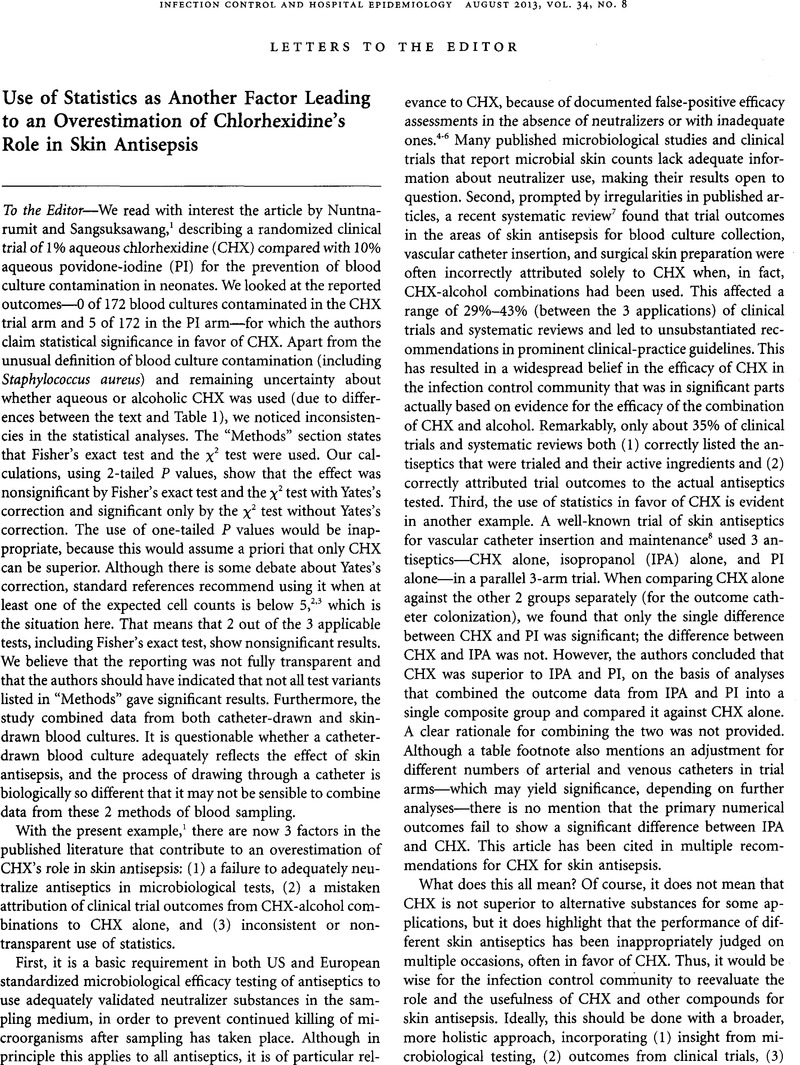Crossref Citations
This article has been cited by the following publications. This list is generated based on data provided by Crossref.
Nuntnarumit, Pracha
and
Sangsuksawang, Nartsiri
2013.
Reply to Maiwald et al.
Infection Control & Hospital Epidemiology,
Vol. 34,
Issue. 8,
p.
873.
Hennig, Thomas-Jörg
Werner, Sebastian
Naujox, Kathrin
and
Arndt, Andreas
2017.
Chlorhexidine is not an essential component in alcohol-based surgical hand preparation: a comparative study of two handrubs based on a modified EN 12791 test protocol.
Antimicrobial Resistance & Infection Control,
Vol. 6,
Issue. 1,
Dörfel, Dorothea
Maiwald, Matthias
Daeschlein, Georg
Müller, Gerald
Hudek, Robert
Assadian, Ojan
Kampf, Günter
Kohlmann, Thomas
Harnoss, Julian Camill
and
Kramer, Axel
2021.
Comparison of the antimicrobial efficacy of povidone-iodine-alcohol versus chlorhexidine-alcohol for surgical skin preparation on the aerobic and anaerobic skin flora of the shoulder region.
Antimicrobial Resistance & Infection Control,
Vol. 10,
Issue. 1,
Marchionatti, Emma
Constant, Caroline
and
Steiner, Adrian
2022.
Preoperative skin asepsis protocols using chlorhexidine versus povidone‐iodine in veterinary surgery: A systematic review and meta‐analysis.
Veterinary Surgery,
Vol. 51,
Issue. 5,
p.
744.



